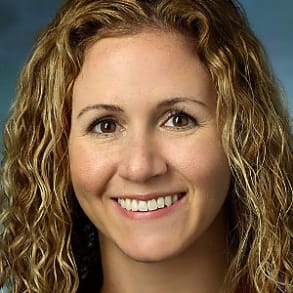Pediatric orthopaedic surgeon Erin Honcharuk discusses frequently asked questions about clubfoot in children, including what parents should look for and common treatment methods.
Share Fast Facts
Watch as Johns Hopkins pediatric orthopaedic surgeon Erin Honcharuk discusses what parents should look for regarding clubfoot in children and common treatment methods. @HopkinsOrtho https://ctt.ec/fxI40+. Click to Tweet
yes a club foot is always present at birth and often times can even be seen on prenatal ultrasounds as well. So there's four characteristics when describing a club foot. The first is K. Avis meaning that there's an increased arch in the foot. The second is add duck tous, meaning that the foot is turned in. The third is varies where the hell or the Calacanis is actually tilted out and then a qui nous where the foot is pointed down. Sometimes in babies it can be difficult to tell if it's a club foot or just a positional flexible position of the foot. Uh The important thing to look for though is that a quietness if the foot cannot be brought up easily then that's a club foot. Different treatments have been tried in the past before the Pond ct method was introduced, all of these babies ended up requiring quite large surgeries and while the surgery tended to be successful it required opening up the joints of the foot and any time you do that it just leads to increased scar tissue and decreased flexibility and a club foot is already a little bit stiffer than a non club foot. Additionally, there was the risk of over correcting the club foot which then became even more difficult to treat. There was another method that was also introduced around the same time as the pond study method that involved using physical therapy stretching and taping. Um This actually proved when combined with that same achilles to nana me at the end of treatment to be about the same as the ponce et method. However, it required a lot from the family. They had to do daily physical therapy, daily stretching, daily taping. Um and so it's just a lot more on their end. Whereas by doing the pancetta method, it's a lot better for the family and we get the same results. The most common cause of a relapse is in patients who are non compliant with bracing. And so that's why it's really important that our families continue to brace as we prescribe in the case of a relapse. We can often reduce some of our pond steady casting and get the foot back into a good position. Sometimes we have to redo our achilles to nana me and sometimes ultimately these patients end up requiring more procedures or sometimes larger procedures to get that foot into a flat position. We like to start casting between 1 to 2 weeks of age. So that means there's no rush in making families call. They don't have to call while they're still in the hospital. They can go home rest, relax for a couple of days and we can usually fit them into our clinics pretty quickly after they call within that 1 to 2 week timeframe. If the baby is born at johns Hopkins, we can always come by talk with the family about the casting process, but usually again don't start it until they follow up in clinic



